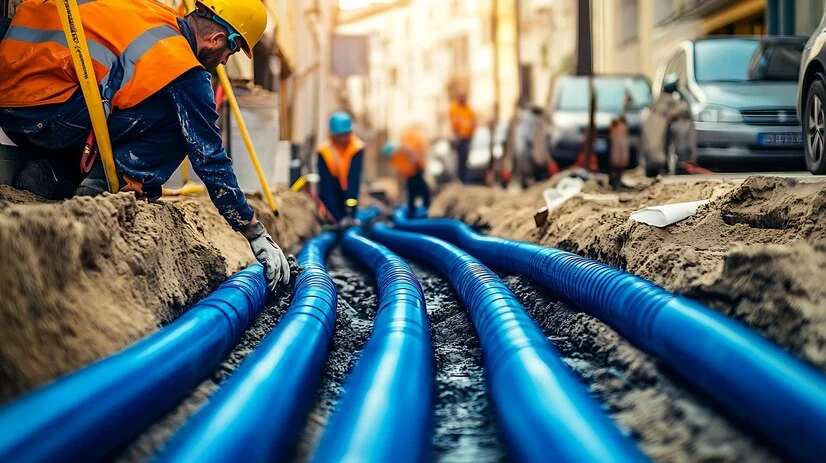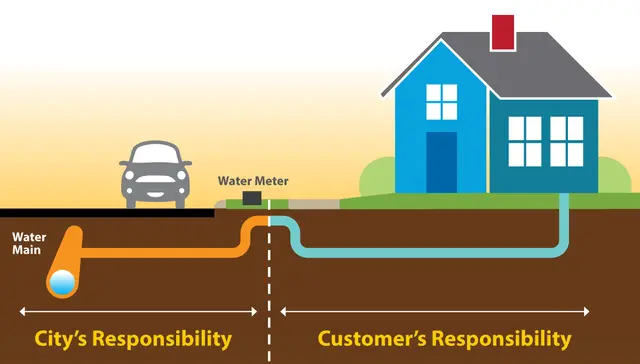Who is Responsible for Water Line from Street to House
When it comes to understanding who is responsible for the water line that runs from the street to your home, there are several key aspects that homeowners need to keep in mind. The division of responsibilities between the homeowner and the water utility company can vary depending on location, property type, and local regulations.
However, understanding who is responsible for the water line that runs from the street to your home can be crucial, especially if a problem arises.

Let’s break down the responsibilities and what you need to know.
Who is Responsible for the Water Line from the Street to Your House?
The water line that supplies your home typically runs from a municipal water main on the street to your house. This line is divided into two main sections: the part that runs from the water main to your property line and the part that runs from your property line to your house.
Municipal Responsibility
The municipality or local water authority is usually responsible for the water main in the street and the portion of the water line that runs from the main to the line on your property1. This includes necessary maintenance, repairs, and replacements. If a leak or break occurs in this section, it is the municipality’s responsibility to fix the problem.
Homeowner Responsibility
Once the water line crosses onto your property, the responsibility generally falls on you, the homeowner2. This means that you are responsible for maintaining, repairing, and replacing the water line from your property line to your home. If a problem occurs in this section, it is up to you to fix it, which can sometimes be costly.
Public vs. Private Responsibility
The water line that supplies your home typically has two main segments:
The public line: This portion is typically managed by the municipal water authority or a private utility company. It runs beneath public streets and sidewalks and supplies water to different properties.
The private line: The section of water line that runs from the property line (often the curb or sidewalk edge) to the house is typically the responsibility of the homeowner. This portion includes the connection at the meter (if present) and extends to the plumbing inside the home.
Identifying the Property Line
The property line is the key marker that distinguishes between public and private liability. Typically, everything on the property owner’s side of the line is the property owner’s responsibility. However, the specific location of this line can vary and it is important to check with local ordinances or the water service provider for more information.
Identifying Issues
Knowing where the problem is is essential to determining who is responsible. Common signs of a water line problem include:
- Sudden increase in water usage: This could indicate a leak.
- Unusual sounds: Bubbling or hissing noises can be a sign of a break.
- Mud puddles: Unexpected wet spots in your yard can indicate a leak.
- Low water pressure: This may be due to a break or blockage in the line.
Steps to take
- Locate the problem: Use a pipe locator or consult your home’s blueprints to trace the water line.
- Document the problem: Take photos and note any visible signs of a problem.
- Contact authorities: If the problem is outside your property boundaries, contact your local water department. If it’s on your property, you may need to call a plumber.
Insurance and Assistance
Homeowners insurance typically covers unexpected problems with your property’s water lines, as long as they’re reported correctly. Additionally, some municipalities offer assistance programs for low-income homeowners who can’t afford to make necessary repairs.
What Part of the Sewer Line Is the City Responsible for
The city is usually responsible for the main public sewer line that runs along the street and collects wastewater from multiple properties. This main line transports wastewater to a treatment plant.

On the other hand, homeowners are usually responsible for the private sewer lateral line that connects their property to the main public sewer line. This includes the section of sewer line that runs from the house to the street, even if it extends beyond the property line.
Replacing the Water Line From the Street to House
Replacing the water line from the street to your home is a major project, but it can be accomplished with the right steps and preparation. Here’s an overview of the process:
- Turn off the water supply: Make sure the water supply is turned off at the main shut-off valve.
- Dig a trench: Dig a trench along the path of the existing water line. The trench should be at least 12 inches deep.
- Remove the old line: Carefully remove the old water line. This may involve cutting through roots or other obstacles.
- Install the new line: Lay the new water line in the trench. PVC or copper pipes are commonly used. Connect the new line to the existing plumbing in your home and to the water meter on the street.
- Test the new line: Turn on the water supply and check for leaks. Make sure the water is flowing properly and there are no leaks at the connections.
- Backfill the trench: Once you are sure there are no leaks, backfill the trench with soil, compacting it as you go to prevent future settling.
- Cleanup: Restore the area to its original condition, including replacing sod or landscaping.
Water Line from Street to House Cost
The cost of this project can vary widely, typically between $1,500 and $12,000. Factors that affect the cost include the length of the line, the materials used, and whether a trenchless method or traditional excavation is used.
Conclusion
Understanding who is responsible for the water line from the street to your home can save you time, money, and stress. By knowing the route of your water line and recognizing the signs of potential problems, you can ensure that any issues are resolved quickly and correctly.
If you have any further questions or need assistance, don’t hesitate to reach out to us!
Related Topics:
